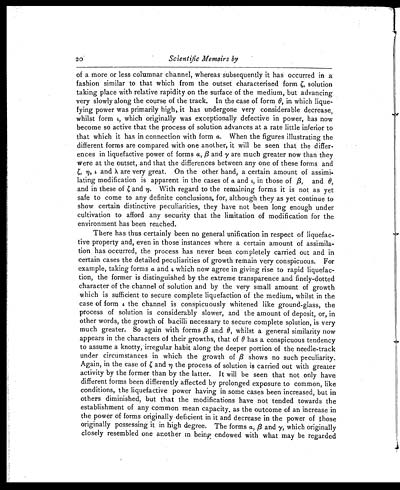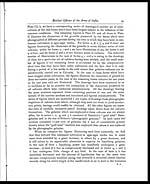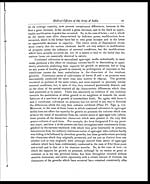Medicine - Institutions > Army health reports and medical documents > Scientific memoirs by medical officers of the Army of India > Part VIII, 1894 > 1 - Results of continued study of various forms of comma-bacilli occuring in Calcutta
(26) Page 20
Download files
Individual page:
Thumbnail gallery: Grid view | List view

20
Scientific Memoirs by
of a more or less columnar channel, whereas subsequently it has occurred in a
fashion similar to that which from the outset characterised form ζ solution
taking place with relative rapidity on the surface of the medium, but advancing
very slowly along the course of the track. In the case of form θ, in which lique-
fying power was primarily high, it has undergone very considerable decrease,
whilst form ι, which originally was exceptionally defective in power, has now
become so active that the process of solution advances at a rate little inferior to
that which it has in connection with form α. When the figures illustrating the
different forms are compared with one another, it will be seen that the differ-
ences in liquefactive power of forms α, β and γ are much greater now than they
were at the outset, and that the differences between any one of these forms and
ζ, η, ι and λ are very great. On the other hand, a certain amount of assimi-
lating modification is apparent in the cases of α and ι, in those of β, and θ,
and in these of ζ and η. With regard to the remaining forms it is not as yet
safe to come to any definite conclusions, for, although they as yet continue to
show certain distinctive peculiarities, they have not been long enough under
cultivation to afford any security that the limitation of modification for the
environment has been reached.
There has thus certainly been no general unification in respect of liquefac-
tive property and, even in those instances where a certain amount of assimila-
tion has occurred, the process has never been completely carried out and in
certain cases the detailed peculiarities of growth remain very conspicuous. For
example, taking forms α and ι which now agree in giving rise to rapid liquefac-
tion, the former is distinguished by the extreme transparence and finely-dotted
character of the channel of solution and by the very small amount of growth
which is sufficient to secure complete liquefaction of the medium, whilst in the
case of form ι the channel is conspicuously whitened like ground-glass, the
process of solution is considerably slower, and the amount of deposit, or, in
other words, the growth of bacilli necessary to secure complete solution, is very
much greater. So again with forms β and θ, whilst a general similarity now
appears in the characters of their growths, that of θ has a conspicuous tendency
to assume a knotty, irregular habit along the deeper portion of the needle-track
under circumstances in which the growth of β shows no such peculiarity.
Again, in the case of ζ and η the process of solution is carried out with greater
activity by the former than by the latter. It will be seen that not only have
different forms been differently affected by prolonged exposure to common, like
conditions, the liquefactive power having in some cases been increased, but in
others diminished, but that the modifications have not tended towards the
establishment of any common mean capacity as the outcome of an increase in
the power of forms originally deficient in it and decrease in the power of those
originally possessing it in high degree. The forms α, β and γ, which originally
closely resembled one another in being endowed with what may be regarded
Set display mode to: Large image | Zoom image | Transcription
Images and transcriptions on this page, including medium image downloads, may be used under the Creative Commons Attribution 4.0 International Licence unless otherwise stated. ![]()
| Permanent URL | https://digital.nls.uk/75002080 |
|---|
| Shelfmark | IP/QB.10 |
|---|---|
| Additional NLS resources: | |




